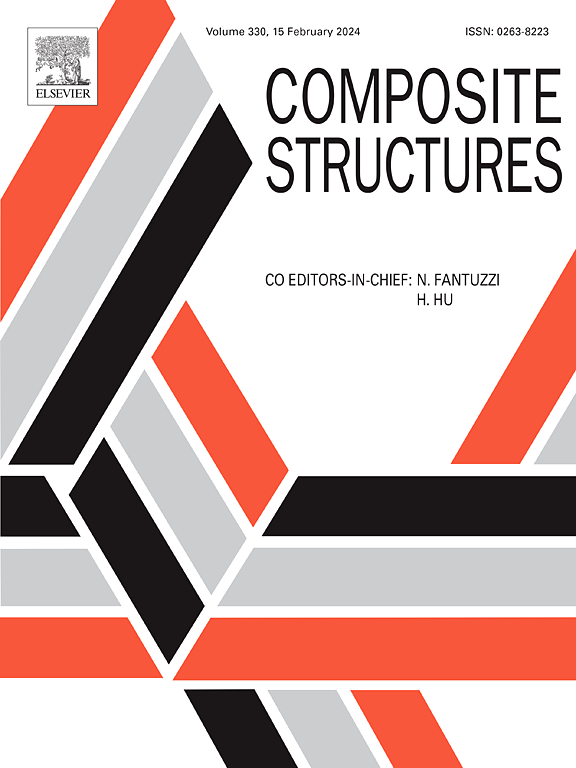Strength through curvature: Engineering multi-phase materials based on chiral aperiodic monotile patterns
IF 6.3
2区 材料科学
Q1 MATERIALS SCIENCE, COMPOSITES
引用次数: 0
Abstract
Developing new materials with superior mechanical properties is crucial in various engineering applications. This study introduces novel multi-phase materials created using chiral aperiodic monotile patterns, distinguished by their curved edges and ability to cover a surface without translational symmetry. We employ multi-objective Bayesian optimization and crack phase-field modeling to explore the mechanical properties of the chiral aperiodic monotile composites, considering the topology, volume fraction, and constituent materials as design variables. Pareto-optimal designs are selected for experimental validation using additive manufacturing and mechanical testing. The experimental results show that these aperiodic composites exhibit an improved balance of mechanical properties, including strength, work of fracture, and failure strain, that typically involve trade-offs in conventional periodic structures. This is primarily attributed to the superior interlocking effect introduced by the curved edges, leveraging the load-bearing capacity of both constituent materials. Additionally, our findings show that the toughening mechanisms and crack propagation paths of these aperiodic composites can be tuned to undergo different failure modes from brittle to ductile fracture along the Pareto front, highlighting the composite’s exceptional ability to be tailored for different design purposes. This research underscores the potential of chiral aperiodic monotiles, paving the way for developing high-performance structural materials.
求助全文
约1分钟内获得全文
求助全文
来源期刊

Composite Structures
工程技术-材料科学:复合
CiteScore
12.00
自引率
12.70%
发文量
1246
审稿时长
78 days
期刊介绍:
The past few decades have seen outstanding advances in the use of composite materials in structural applications. There can be little doubt that, within engineering circles, composites have revolutionised traditional design concepts and made possible an unparalleled range of new and exciting possibilities as viable materials for construction. Composite Structures, an International Journal, disseminates knowledge between users, manufacturers, designers and researchers involved in structures or structural components manufactured using composite materials.
The journal publishes papers which contribute to knowledge in the use of composite materials in engineering structures. Papers deal with design, research and development studies, experimental investigations, theoretical analysis and fabrication techniques relevant to the application of composites in load-bearing components for assemblies, ranging from individual components such as plates and shells to complete composite structures.
 求助内容:
求助内容: 应助结果提醒方式:
应助结果提醒方式:


